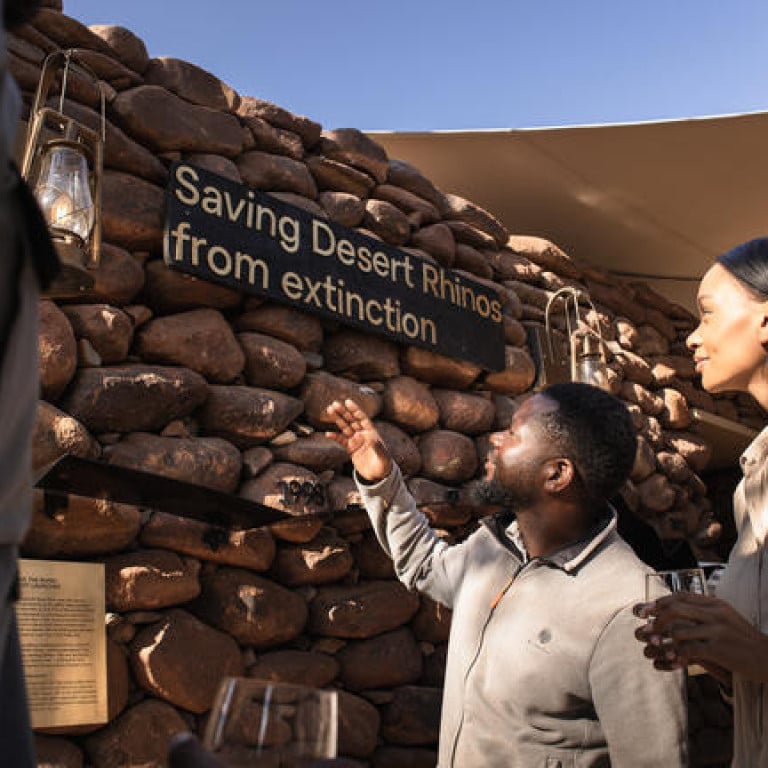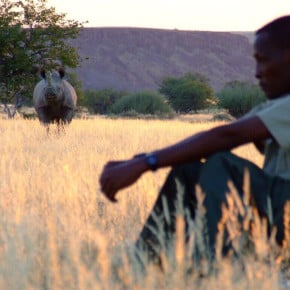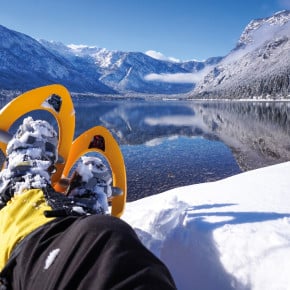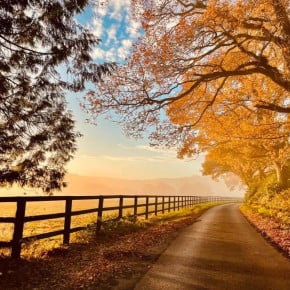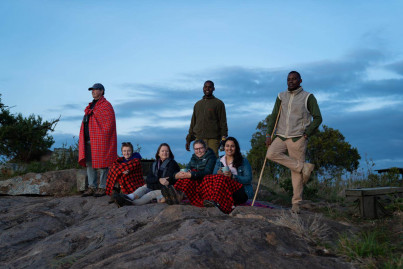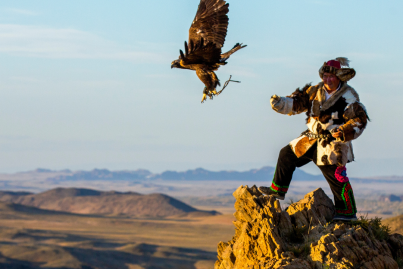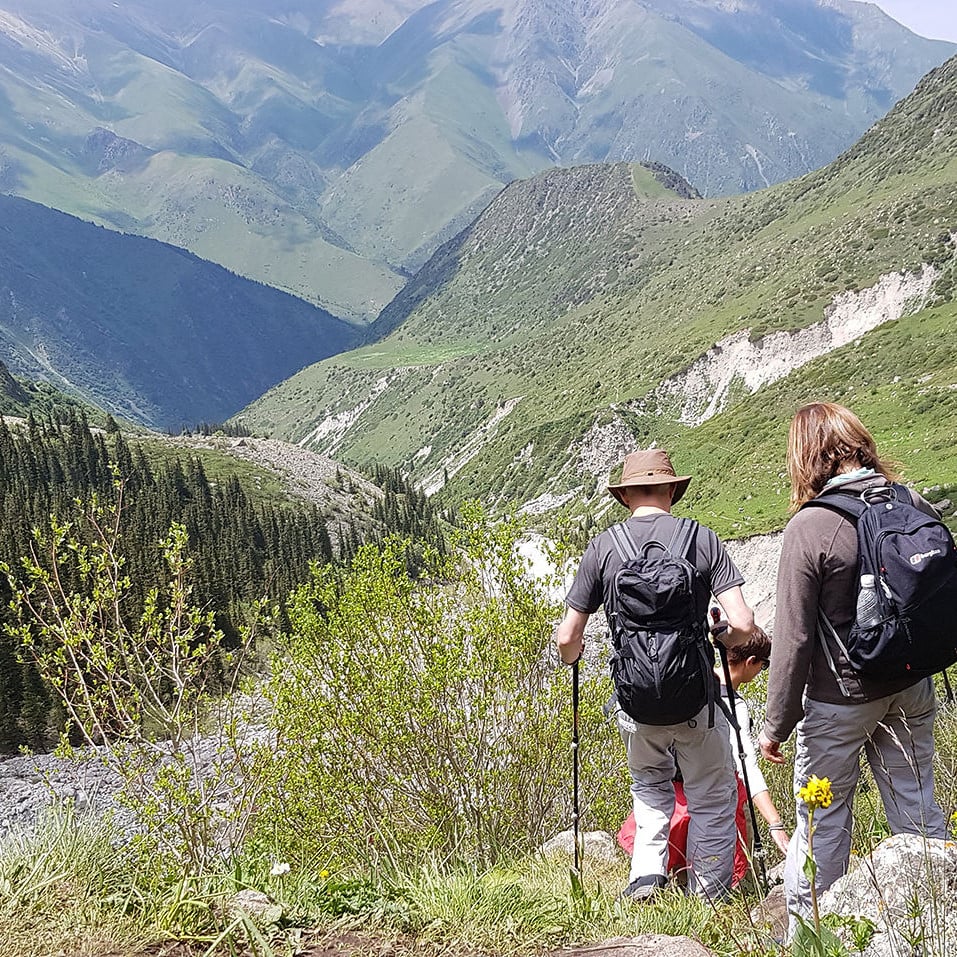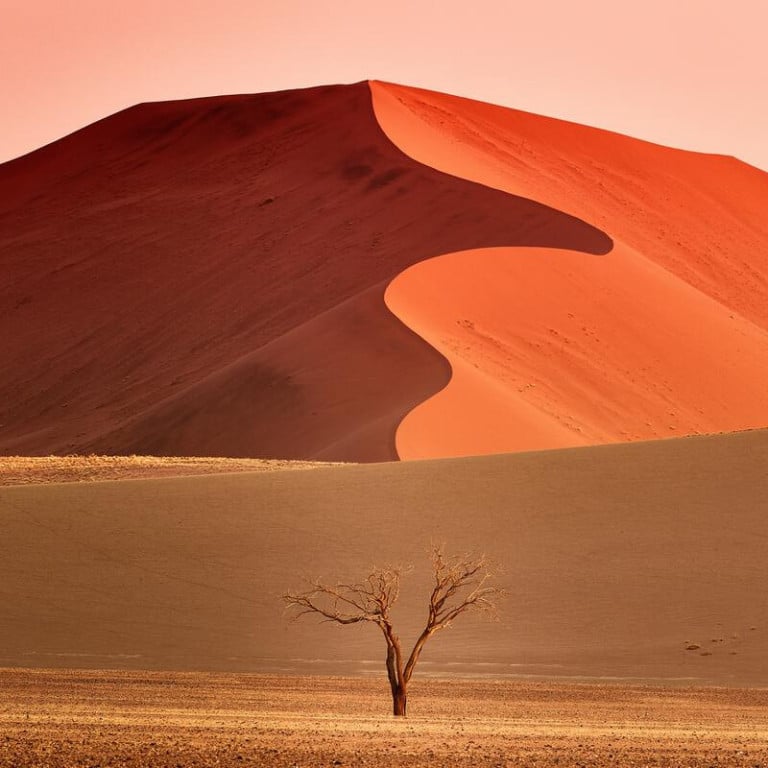
The country
Located in southwestern Africa, approximately 81% of Namibia's land area is classified as desert or semi-desert, making it the second driest country in the world after the Sahara Desert.
And yet many species of desert-adapted animals still dwell here. Namibia is a destination for travellers seeking an unforgettable African experience in a uniquely beautiful untamed wilderness.
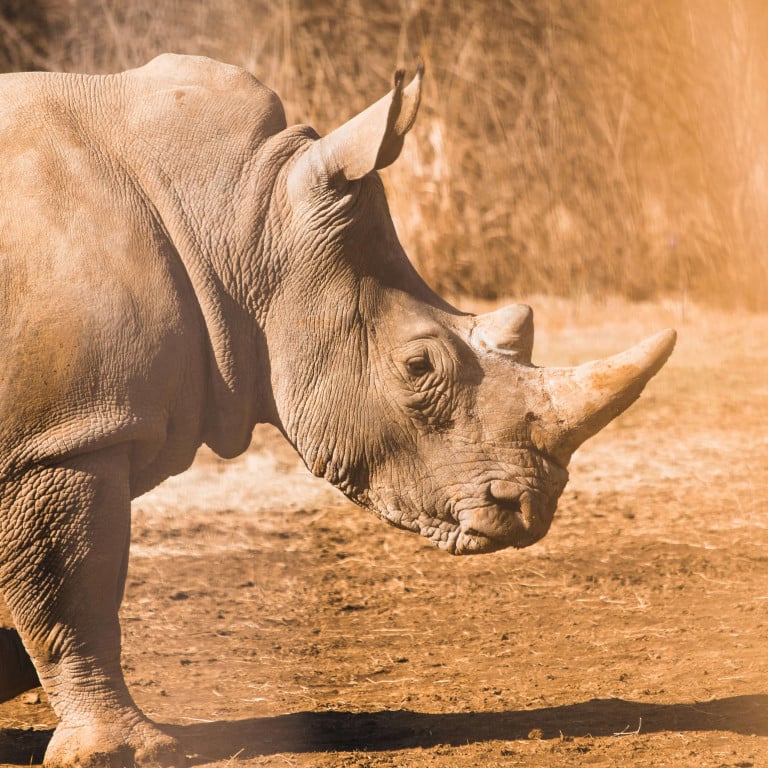
Palmwag, Damaraland
Palmwag is a nature reserve idyllically located along a palm-lined tributary of the Uniab River. Water is scarce in this area, so the river’s presence often lures elephants closer to the camps. Animal lovers can also get a peek at leopard, lion, cheetah, mountain zebra, Angolan giraffe, springbok, kudu, and African bush elephant.
The reserve is notable for its unusual species of palm tree, the hyphaene petersiana, and for being home to the largest population of southwestern black rhinos in Africa. The last free-roaming population of black rhinos can also be found in the region, owing their survival largely to the efforts of community conservation. Trained guides can lead you to track the endangered animals on foot, as well as via tour vehicles.
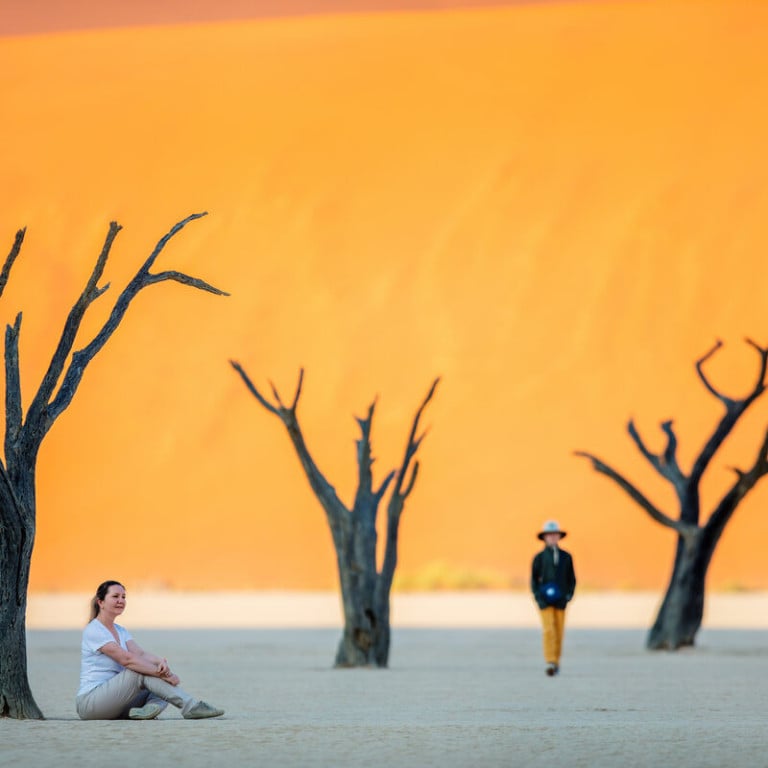
Sossusvlei & Sesriem
The sand of the famous dunes of Sossusvlei is thought to have originated in the Kalahari to the east, between three and five million years ago. This area boasts some of the highest dunes in the world, with many of them over 200 metres tall. There is no accommodation at Sossusvlei, visitors to this desert wilderness are likely to end up staying at Sesriem, 65 kilometres away, where camps and lodges serve as a base from which to explore the dunes.
Sesriem Canyon, a deep chasm carved through the rocks by water, is a striking natural feature of the area that is best explored on foot. Stony walls rise up sharply on both sides of the canyon, while birds roost in its crags and lizards dart along the ledges.
The canyon’s name was coined when early settlers used it as a water source, using six lengths of leather (‘ses riem – six thongs) tied together to lower buckets into the water at the base of canyon.
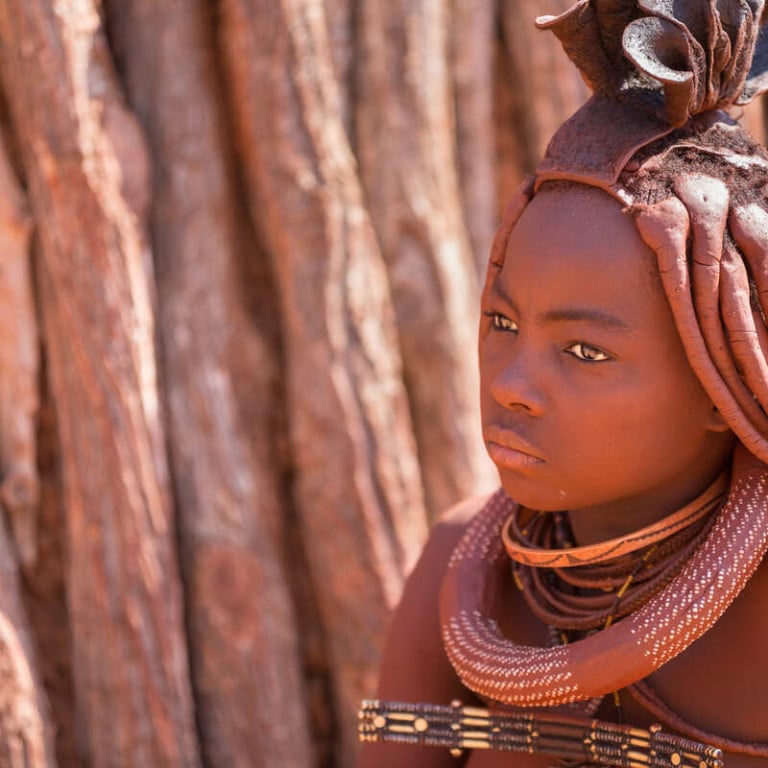
Himba people
A strong cultural identity is upheld by semi-nomadic Himba tribes, who practise a traditional way of life that’s as enduring as the landscape itself. With their ochre-coloured body paint and thick braids, Himba people are the most recognisable of Namibia’s 11 ethnic groups.
Moving between mud-made dwellings in the north-western Kunene region, these semi-nomadic pastoralists have clung closely to their culture. Learn about the importance of the Holy Fire and different hair rituals during a visit to a local village.
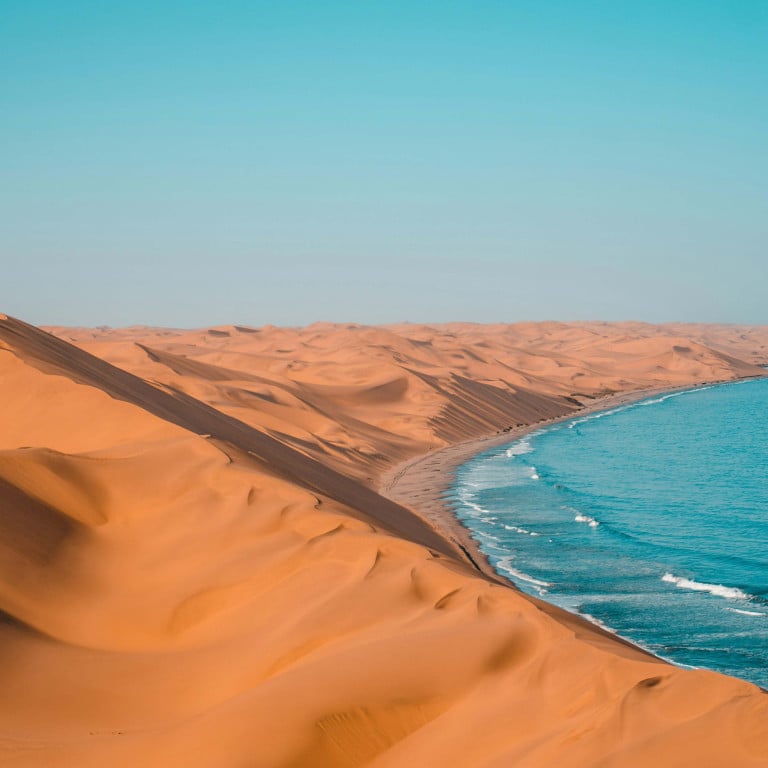
The coast
Set along Namibia's spectacularly scenic coast, the seaside town of Swakopmund is known for its wide-open avenues, colonial architecture, and its surrounding otherworldly desert terrain. Founded in 1892 as the main harbour for German South-West Africa, Swakopmund is often described as being more German than Germany.
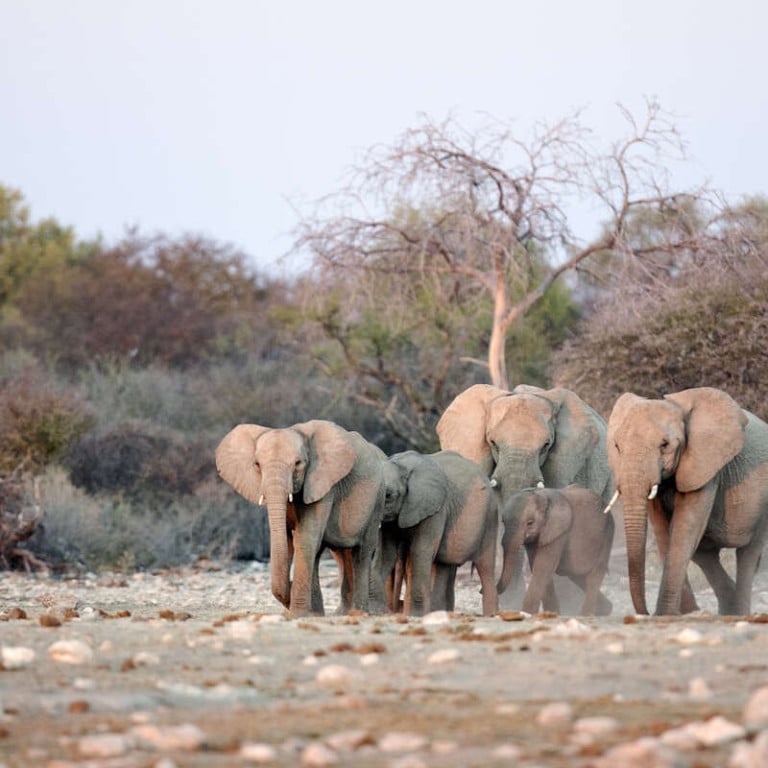
Hoanib River
Where Kaokoland meets the Skeleton Coast, in western Namibia, the 270-kilometre-long Hoanib River is one of the last water oases in the country, providing a haven for numerous animals.
Home to 75% of Namibia’s endemic species, including the largest numbers of desert-adapted, free-roaming elephants, lions, and rhinos in the world, as well as zebra, kudu, and giraffe, this is a truly exceptional and awe-inspiring place.
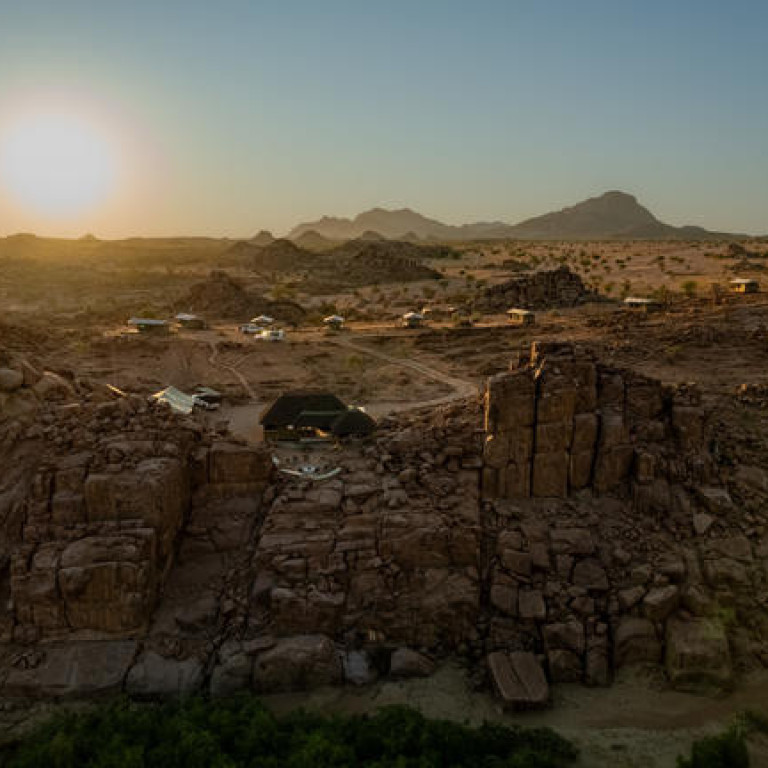
Fire mountains
Situated in northwestern Namibia, the Brandberg, meaning 'Fire Mountain', Massif is Namibia’s highest peak, at its zenith, the Königstein (King’s Stone), standing at 2573m is named for the vivid shade of orange it sometimes turns at sunset.
The Brandberg has been sacred to the San people for centuries. The Tsisab Ravine at its base is permeated with over 45 000 ancient San rock paintings, including the famous ‘White Lady'; the unique bushman painting said to be over 2000 years old. Free-roaming wildlife can also be found here including mountain zebra, kudu, springbok, and desert elephant.
